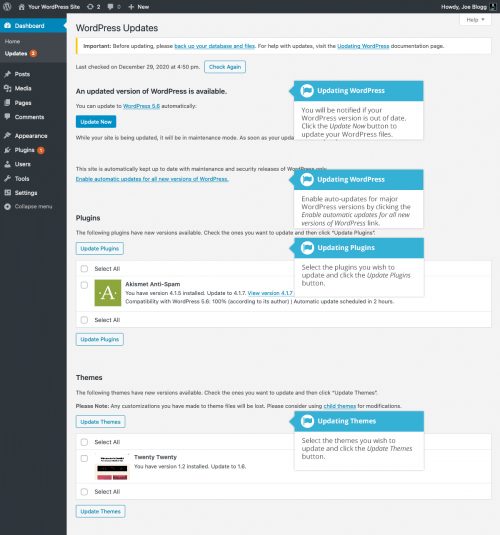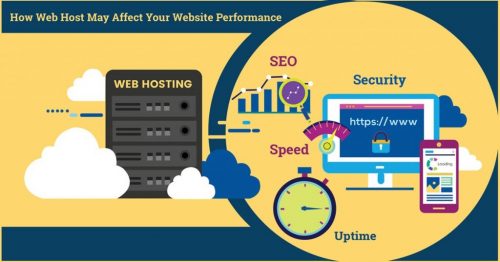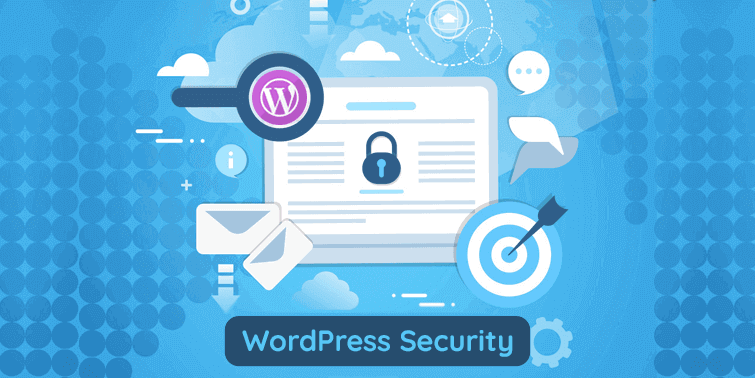WordPress security is a very important topic for every website owner. Google List lists 10,000+ daily malware websites and 50,000 rounds of phishing scams every week.
If you are serious about your website, you will need to pay attention to the best security practices of WordPress.
While the main WordPress software is very secure, and is regularly tested by hundreds of developers, there is much that can be done to keep your site safe.
#1 : Why WordPress Website Security is Important?

In addition to an effective security strategy, businesses are at risk of spreading malware, attacks on other websites, networks, and other IT infrastructure. If the criminal is successful, the attack can spread from computer to computer, making it difficult to trace its origin.
Many companies use WordPress for their websites. And for that reason, the platform is very reliable, efficient and flexible to suit your needs with great ease. But it is also prone to attack, especially if you are using a vanilla version without plugins.
Hackers are everywhere on the Internet, and they are always ready to take your company data and sell it to the highest paid person.
You should protect your business right away, and choosing the best WordPress protection tools should be a priority!
#2 Keeping your site updated

From time to time, themes, plugins and WordPress will need to be updated. Renewals occur most often when engineers remove safety spots or add additional functionality.
It is a good practice to keep your themes, plugins and WordPress version updated to the latest versions.
The top two reasons for hacking sites are unsafe passwords and outdated (vulnerable) software.
In an effort to promote better security and simplify the update experience, WordPress will automatically update itself, if it can, whenever a smaller version is released (e.g. V5.4.2, v5.5.1, v5.5.2).
These small releases are usually for maintenance and security or for the translation of a translation file.
WordPress can also automatically update major versions (e.g. V5.6, v5.7). For existing websites, these major versions of automatic updates need to be opened manually by clicking Enable automatic updates for all new types of WordPress link on the Updates page. For new websites created with WordPress 5.6 and above, major automated updates will be automatically unlocked.
WordPress can also automatically update your themes and plugins, but this requires unlocking each theme and plugin. You can turn on automatic Theme and Plugin updates on the Themes and Plugins screens, respectively.
Once your site has been automatically updated your site administrator will be notified by email. If your WordPress installation cannot be updated automatically for some reason, your site administrator will be notified of this as well.
To manually update your WordPress version or update your themes and plugins, move your cursor to the dashboard menu option on the left navigation menu and exit menu, click on the update link. Alternatively, click on the dashboard menu option and click on the Update link below.
The Updates page is divided into three sections. If your version of WordPress needs an update, this will be displayed at the top of the page. Below, you will be notified of any plugin updates and below, theme updates.
Updating your WordPress version is as easy as clicking the Update Now button. WordPress will download the required files, perform authentication of those files and automatically update your site.
#3 Strong Passwords and User Permissions

Before updating your site, it is always wise to make a backup first, in case something happens accidentally or after installation.
If there are any plugins that can be updated, these will be listed in the Plugins section of the page. To update your plugins, tick the boxes next to the plugins you wish to update and click the Update Plugins button. New plugin files will be downloaded and installed automatically.
If there are any themes that can be updated, these will be listed in the headings section on the page. To update your themes, tick the boxes next to each theme you wish to update and then click the Update Themes button.
New theme files will be downloaded and installed automatically.
After your site has been updated, whether it is automated, manually or with themes and plugins, it is a good idea to give your site a quick test to make sure it works as well as expected. This will ensure that new themes, plugins or WordPress itself have not introduced new functionality that adversely affects your site or changes the way your site works.
Many beginners do not like to use strong passwords because they are difficult to remember. The good thing is that you don’t have to remember passwords anymore. You can use a password manager. See our guide on how to manage WordPress passwords.
#4 The Role of WordPress Hosting

If you have a large group or guest writers, then make sure you understand user roles and capabilities in WordPress before adding new user accounts and authors to your WordPress site.
Your WordPress hosting service plays a very important role in the security of your WordPress site.
A good shared hosting provider like Bluehost or Siteground takes extra steps to protect their servers from common threats.
Here’s how a good web hosting company works in the background to protect your websites and data.
They are ready to deploy disaster and disaster recovery programs that allow them to protect your data in the event of a major accident.
In a shared hosting plan, you share server resources with many other clients.



Good job